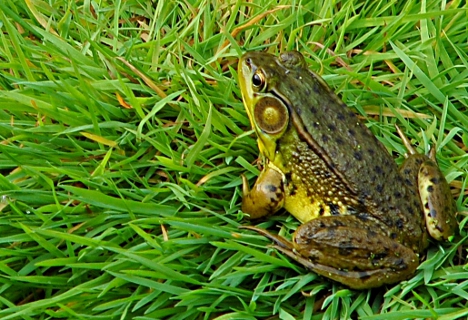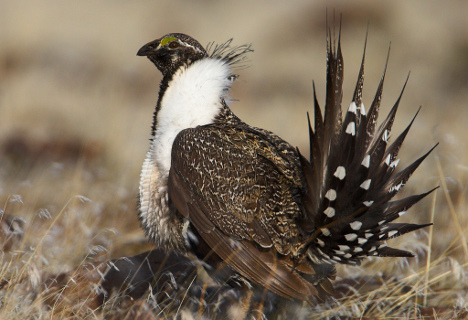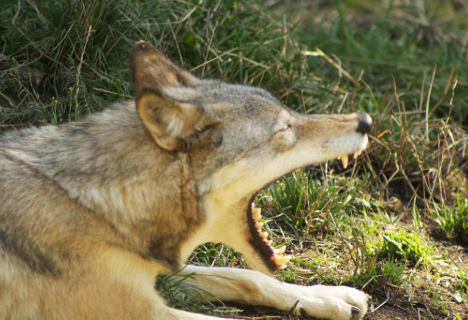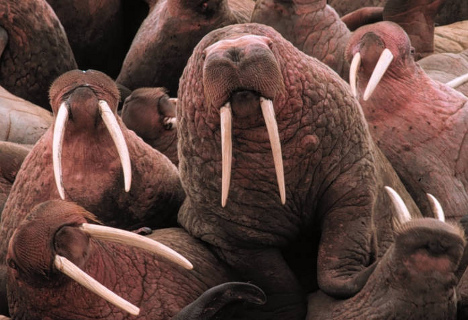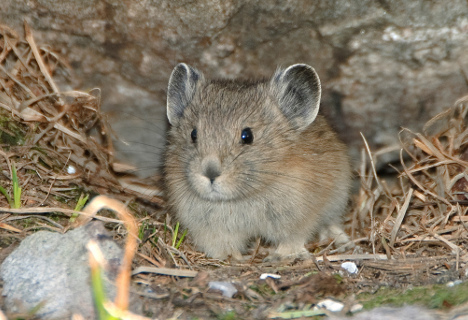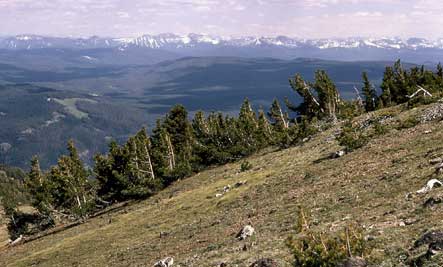Tigers, black rhinoceros, and giant pandas attract a lot of attention from conservationists and wildlife lovers — and with good reason. The global populations for these species number in the thousands or even less and their habitats are rapidly degrading.
Dig deeper into endangered lists, however, and hundreds more species turn up which — while they may have a greater population — are facing challenges that make their futures look grim. But just because a species is not on the Endangered Species List does not mean it is safe from harm. From the millions of frogs harvested each year for their legs to the sage grouse facing encroaching oil drillers, species struggle even without special conservation designations.
Frogs
Around the world, frogs are in trouble. Threatened by disease — notably Chytridiomycosis — pollution, and habitat destruction, some areas have experienced an 80 percent decline in local populations.
The losses are not limited to endangered species. One of the growing threats to frogs is the global demand for frogs legs. Targeting typically common frog species — like the green pond frog — the world’s insatiable appetite for frogs legs — including 2.08 million kilogrammes in the United States, 1.99 million kilogrammes in Asia, and 4.17 million kilogrammes in Europe annually — is proving to be unsustainable. Billions of frogs a year are harvested for their legs, pushing some local populations past the point of collapse.
Photo credit: j / f / photos / Creative Commons
Sage Grouse
In Wyoming, the story of the imperiled sage grouse highlights the challenges faced by imperiled species. Since the 19th century, the grouse has experienced a 50 percent reduction in its rangeland and a 90 percent reduction in its population. In spite of this, it was denied endangered species status last year. In the announcement, Secretary Ken Salazar commented that “we must find common-sense ways of protecting, restoring, and reconnecting the Western lands that are most important to the species’ survival while responsibly developing much-needed energy resources.”
Now, the grouse is facing the challenges of this attempt to simultaneously develop and preserve habitat. Earlier this summer, the Bureau of Land Management granted permission for oil and gas companies to drill in sage grouse habitat. The proposed region includes sage grouse breeding areas, suggesting that drilling could greatly disrupt this imperiled species.
Photo credit: USFWS Pacific Southwest Region / Creative Commons
Grey Wolf
The on-again off-again status of the grey wolf in the United States is indicative of its controversial place in the United States. Today, the grey wolf has lost its protected status almost everywhere — with the notable exception of Wyoming, where conservation plans were deemed to hollow to allow for delisting.
The decision was based on the sizable recovery wolves have made under protection the last 30 or more years. Biologists, however, believe that the populations are still not significant enough to merit delisting, let alone hunting.
Photo credit: Arran_Edmonstone / Creative Commons
Pacific Walrus
During the 18th and 19th centuries, walrus around the world were exploited heavily by hunters, leading to extirpation and near extinction. Since then, populations have rebounded thanks to reduced pressure from hunting.
As a result, the walrus is largely considered a species of “least concern” by conservation groups and has achieved the status of “warranted but precluded” by the US Department of the Interior — essentially, a place on the endangered species waiting list.
Climate change, however, means that the walrus’ preferred habitat — ice sheets in the arctic — are vanishing quickly. At the same time, key foraging grounds have been auctioned to oil and gas companies.
Photo credit: USFWS Headquarters / Creative Commons
American Pika
The adorable American pika, too, could end up a victim of climate change. Warming temperatures in the Western United States have forced the pika — which thrives in rocky, alpine, terrain — to move to higher elevations. The problem is that eventually, the small mammals run out of higher ground.
In spite of this, the pika has been denied endangered species status.
Photo credit: M Hedin / Creative Commons
Whitebark Pine
The whitebark pine — a foundation species in the American West that serves as a cornerstone for several ecosystems — is also threatened throughout its range due to climate change. Warmer winters have allowed mountain pine beetles to survive and thrive at higher elevations — places where the whitebark pine has traditionally retreated to weather beetle outbreaks.
Even though it has not received endangered species protections, biologists estimate that the whitebark pine will be functionally extinct in and around Yellowstone within the next 10 years.
Photo credit: National Park Service
Curated and adapted from The Tree Hugger

